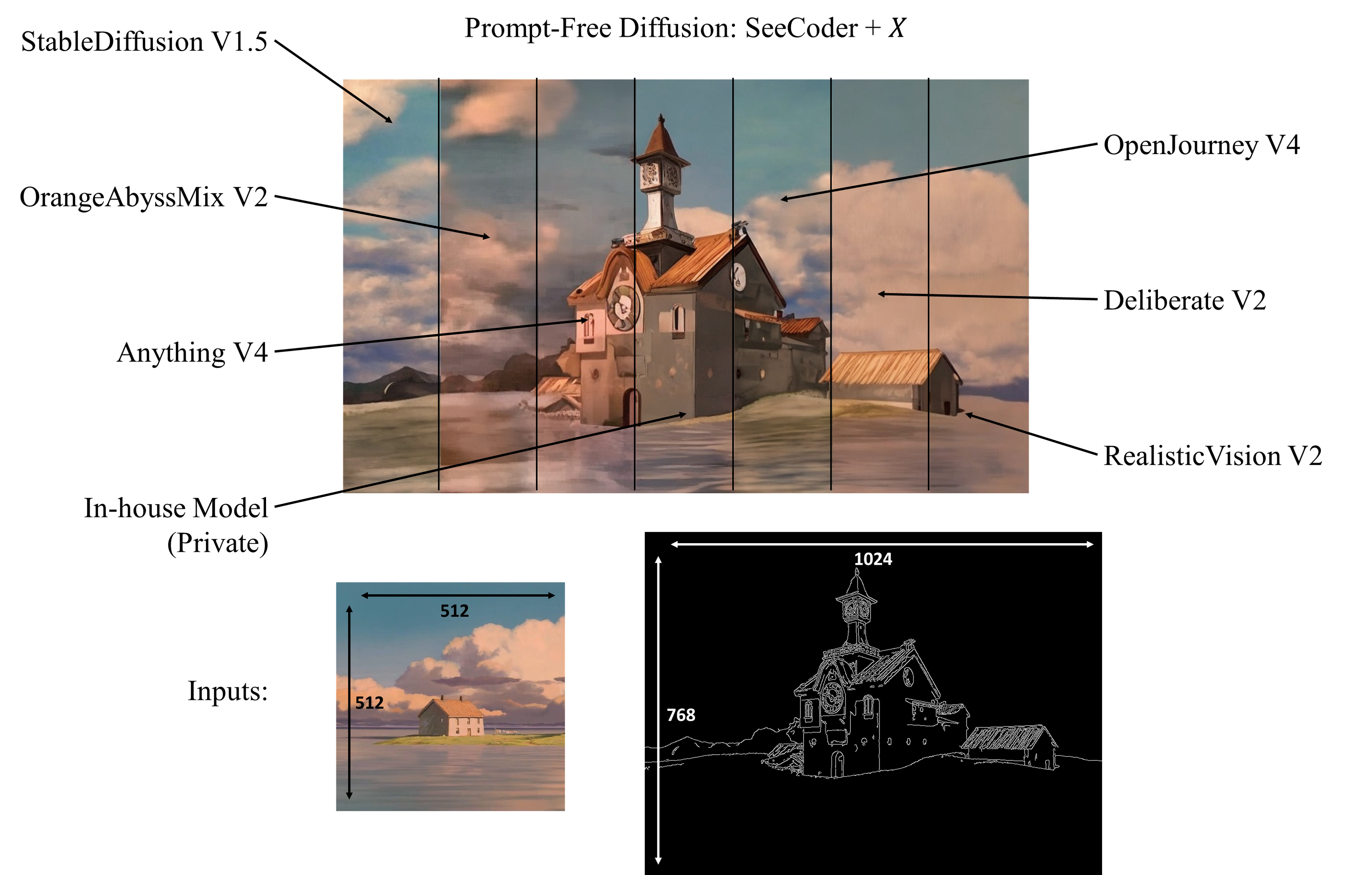Prompt-Free Diffusion: Taking "Text" out of Text-to-Image Diffusion Models
Text-to-image (T2I) research has grown explosively in the past year, owing to the large-scale pre-trained diffusion models and many emerging personalization and editing approaches. Yet, one pain point persists: the text prompt engineering, and searching high-quality text prompts for customized results is more art than science. Moreover, as commonly argued: "an image is worth a thousand words" - the attempt to describe a desired image with texts often ends up being ambiguous and cannot comprehensively cover delicate visual details, hence necessitating more additional controls from the visual domain. In this paper, we take a bold step forward: taking "Text" out of a pre-trained T2I diffusion model, to reduce the burdensome prompt engineering efforts for users. Our proposed framework, Prompt-Free Diffusion, relies on only visual inputs to generate new images: it takes a reference image as "context", an optional image structural conditioning, and an initial noise, with absolutely no text prompt. The core architecture behind the scene is Semantic Context Encoder (SeeCoder), substituting the commonly used CLIP-based or LLM-based text encoder. The reusability of SeeCoder also makes it a convenient drop-in component: one can also pre-train a SeeCoder in one T2I model and reuse it for another. Through extensive experiments, Prompt-Free Diffusion is experimentally found to (i) outperform prior exemplar-based image synthesis approaches; (ii) perform on par with state-of-the-art T2I models using prompts following the best practice; and (iii) be naturally extensible to other downstream applications such as anime figure generation and virtual try-on, with promising quality. Our code and models are open-sourced at https://github.com/SHI-Labs/Prompt-Free-Diffusion.
PDF Abstract



